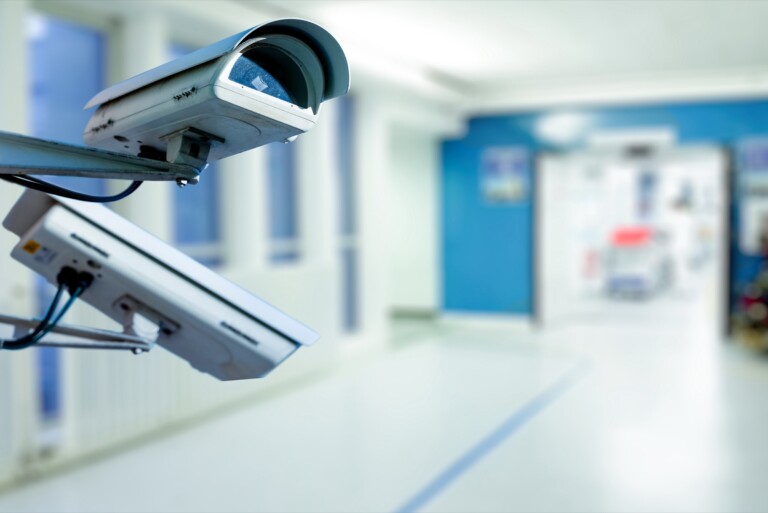The Importance of Security Systems for Healthcare Providers
Providing effective security systems is essential for healthcare providers to protect both patients and hospital staff. Having immediate access to medical care provided at hospitals is essential, so most hospitals operate 24/7. In emergencies, hospitals need to be available to help patients in need. Because of the 24/7 accessibility to the public, hospitals have increased risks regarding safety and security.
Some key actors to consider when enhancing hospital safety are security, surveillance, and alarm systems. It’s also necessary to know how to identify hospital safety threats and understand how to handle any breaches. Awareness of these critical factors can help recognize what is needed to keep a hospital safe and secure. Besides understanding the factors of hospital safety, it’s essential to identify hospital safety threats. It would be impossible to provide security without knowing what you’re trying to prevent.
Identifying Hospital Safety Threats
There is a variety of possible threats that could compromise hospital safety. It’s vital to protect both the patients and the staff while also preserving areas of the hospital that need to be well-secured. Hospitals often have many units that are not accessible to the public, such as quarantine zones, labs, surgical rooms, mental health facilities, and areas holding immunocompromised patients. Identifying any hospital safety threats to these secured zones can help put preventative measures in place to avoid these breaches.
Another aspect of possible safety threats to consider is patients or visitors who threaten themselves or other people around them. Being able to predict and prevent aggressive and violent situations can help stop these situations before they escalate. Having a security guard, whether physical or virtual, can be vital to handling these situations. Ensuring that all staff is familiar with de-escalation techniques is also crucial to sustaining effective security systems as a healthcare provider.
A hospital security survey from 2018 listed violence against staff as the top security challenge faced by hospitals. The survey also recorded trespassers, patient elopement, and car thefts as major threats to hospital safety. Recognizing these threats can benefit hospitals wanting to improve their safety and security for patients and staff.
Security and Technology
Having an effective security system in place is vital to reinforcing hospital safety. This system can include the use of technology and critical thinking to guarantee hospital staff and patient protection. Hospital safety technology such as access control devices, virtual security guards, and alarm systems can reinforce hospital safety. Once the potential threats have been identified, hospitals need to ensure that they have the security and technology to prevent these threatening situations.
Video Surveillance and Virtual Security Guards
Video surveillance is one of the most effective ways to provide hospital safety. Putting security cameras in place around the premises can help security staff keep safety under control. Using video surveillance gives staff situational awareness of the hospital to identify and handle any safety threats immediately.
Patients can be tracked quickly and effectively to help prevent wandering patients, also known as patient elopement. Wandering patients is one of the most significant issues in the safety of patients and staff. With patients that suffer from mental issues, such as dementia, elopement can be extremely dangerous if they leave the hospital grounds.
Here at Securiteam, we can provide virtual security guards, which can help quicken response times while lowering staffing costs. These virtual security guards are highly trained to find threats that may go unnoticed. Using a virtual security guard can relieve hospital staff from security duties, allowing them to do their designated jobs while leaving the threat detection up to the experts.
Access Control Devices and Alarm Systems
Access control devices can keep secured areas protected. Most hospitals have sites that are meant to be well-secured. Having an access control device in these areas can prevent unauthorized access. Controlling access can be accomplished using various access control devices—from simple badge-based systems to advanced biometric technologies. These devices can help verify the legitimacy and authority of a person trying to enter a secured area without the need for hospital personnel involvement.
An up-to-date alarm system can help notify hospital staff if a secured area has been entered without authorization. An alarm system can also alert staff where exactly the breach is located so the situation can be handled immediately and effectively. Although access control devices are meant to deny entry to unauthorized people to secured areas, having an alarm system can further protect these areas from any breaches.
Updating Security Systems for Healthcare Providers
Staying up-to-date with new technologies and ways to keep healthcare staff and patients safe is essential to upkeeping the security systems in place. By understanding the risks and knowing how to manage them, healthcare providers can guarantee that hospitals are safe for both staff and patients. Recognizing potential threats is the key to putting preventative measures in place. With these safety measures, hospital staff can focus more on helping patients, and less on hospital security.






